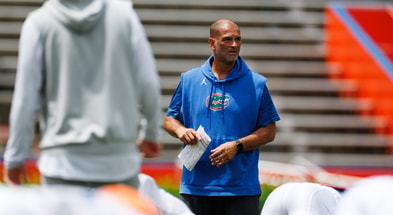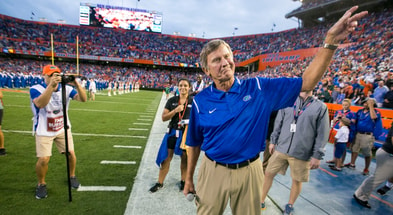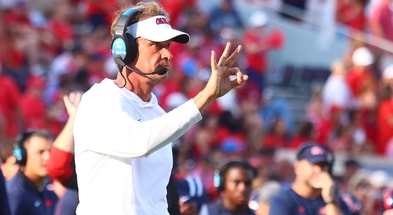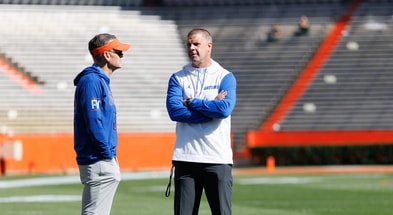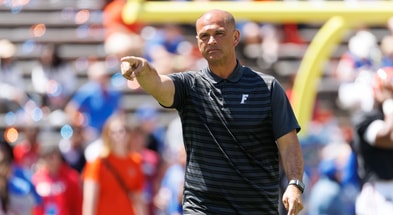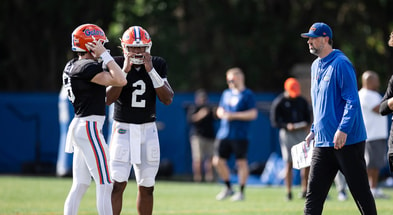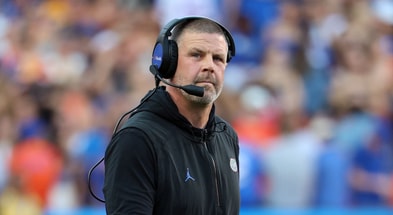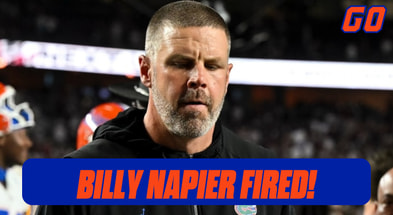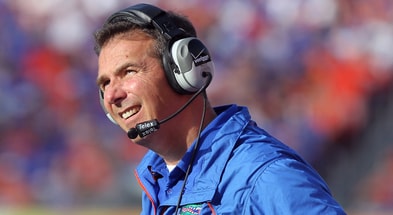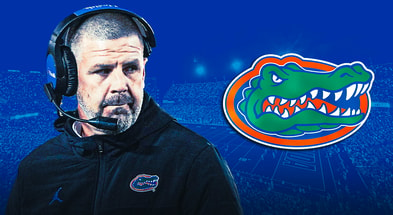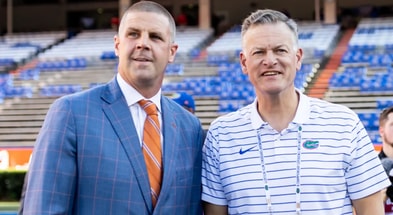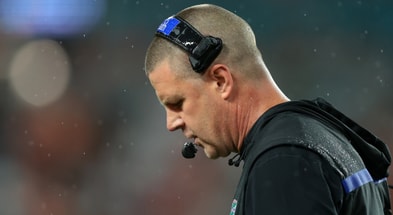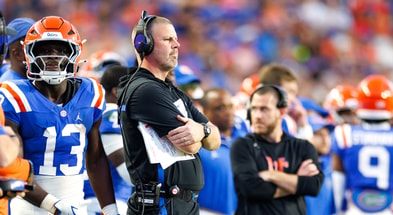Scott Stricklin provides more detail on Ben Hill Griffin Stadium renovation
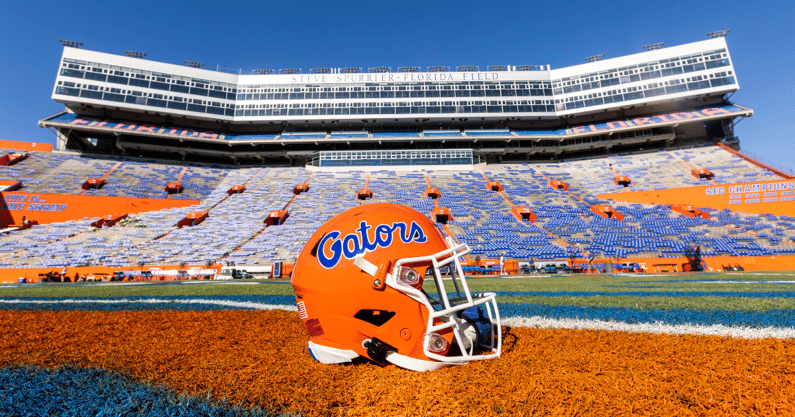
GAINESVILLE, Fla. — Ben Hill Griffin Stadium has become one of the most iconic venues in college football. It provides a tremendous home-field advantage to the Florida Gators. At more than 90 years old, it could stand some upgrades but navigating how to renovate a venue that means so much to so many people is tricky. Florida Athletic Director Scott Stricklin is learning that.
Stricklin and the UAA have spent years studying other iconic venues, how they have been renovated or updated, and how to keep the same feel while improving the in-person experience. It’s not a responsibility that Stricklin or the UAA is taking lightly.
The project has received a lot of criticism because of the notion that the plans will greatly impact the capacity of the stadium of 88,548. This week, Stricklin addressed that narrative.
“At one point I think we might have mentioned that we might have to reduce capacity. That is not the goal,” Stricklin said on Sportscene with Steve Russell. “The goal is to be in a situation where we can have the same number of Gator fans that have been coming the last 30 years to continue to come. In a perfect world, we don’t impact capacity negatively and we’re able to be at the same number.”
Top 10
- 1
Tony Vitello
Vols coach spotted at scrimmage
- 2New
UF Coaching Search
Two non-Kiffin names to watch
- 3
Biletnikoff Poll
On3 votes top WRs
- 4Trending
Steve Spurrier
Reacts to Kiffin, Florida talk
- 5
National Title Odds
Big shakeup after Week 7
Get the Daily On3 Newsletter in your inbox every morning
By clicking "Subscribe to Newsletter", I agree to On3's Privacy Notice, Terms, and use of my personal information described therein.
In December, the UAA announced the hiring of the architect firm Crawford Architects to formally begin developing renovation, construction, and phasing options for The Swamp. The firm has had prior jobs updating old and iconic venues including Fenway Park. Renovating the stadium and not impacting capacity will be tricky but Stricklin insists that the features that make Ben Hill Griffin what it is will remain.
“The term I think of is a restoration. That’s what I see us doing with the Swamp. That’s why we selected Crawford. Because they understand how important it is that we keep the uniqueness of The Swamp,” Stricklin said.
“The wing walls, the proximity of the fans to the field. Not putting a bunch of chairbacks everywhere just because that does take away from what makes it unique. We’re going to be very careful whatever we do. We don’t know exactly what that is. We’ll start in the next eight to twelve months and come up with an idea that we can take to Gator Nation and say, this is the vision. That’s going to be significant because obviously, it’s the most important facility we have.”
Timeline of Ben Hill Griffin Stadium construction and renovations
| Apr. 16 1930 | Construction begins on the original Florida Field |
|---|---|
| Oct. 27 1930 | Construction completed on original Florida Field (capacity 21,769). The original stadium consisted of the first 32 rows on the west, east and north sides of the current stadium. |
| Nov. 8 1930 | Dedication of Florida Field as sellout crowd of 21,769 watches Florida vs. Alabama. The legendary Red Barber, a UF student, calls the play-by-play. |
| Oct. 13 1934 | Florida Field is dedicated to the memory of servicemen who died in World War I. |
| Sep. 24 1938 | The first night game is played at Florida Field versus Stetson. |
| Dec. 16 1949 | Plans drawn to add 11,200 seats to the west stands. Expansion completed for the 1950 season, bringing total capacity, including temporary bleachers, to 40,116. |
| Dec. 1965 | Construction starts on the east-side 10,000-seat addition, bringing permanent seating to 56,164. Also, temporary bleachers moved to the south end zone for a total capacity of 62,800 during the 1966 season. |
| Apr. 1971 | Artificial surface installed. |
| Aug. 1982 | Completion of the south end zone, bringing capacity to 72,000. The athletic training center, skybox tower and modern press box were also involved in this project. |
| Sep. 9 1989 | Football stadium named Ben Hill Griffin Stadium at Florida Field during dedication ceremonies. The stadium is named in honor of Ben Hill Griffin Jr., a lifelong Gator supporter and fan who had been extremely benevolent and generous to several sectors at the University of Florida. |
| June 30 1990 | Natural grass replaces artificial turf at Florida Field. |
| Sep. 1991 | Construction completed on new north end zone. Capacity now stands at 83,000, making Florida Field one of the eight largest on-campus collegiate football stadiums in the nation and the largest in the state of Florida…The north end zone addition costs $17 million, but involves no state funding. |
| Nov. 30 1991 | Ben Hill Griffin Stadium is the site of the largest football crowd (collegiate or professional) in state of Florida history (85,461 vs. FSU). During the 1991 and 1992 seasons, the stadium will be the site of the 12 largest crowds in state history. |
| Oct. 12 1991 | The official dedication of the new north end zone is held, as Florida meets Tennessee. Red Barber, who called the original dedication game in 1930, is UF’s special guest of honor. |
| End of 1991 Season | Head Coach Steve Spurrier tags Ben Hill Griffin Stadium at Florida Field “The Swamp.” |
| Prior to 1998 Season | Florida completed a $5 million renovation of the Ben Hill Griffin Training Complex in the south endzone, making the facility one of the nation’s elite. |
| Prior to 2003 Season | Construction was completed on a two-year, $50 million stadium expansion/renovation that includes the addition of 2,900 luxury club seats, expanded press level, renovated and enlarged Bull Gator Deck, enlarged President’s Suite and 34 additional suites that was funded by private support from Gator Boosters and fans. |
| Prior to 2004 Season | A high-resolution video board highlights the new Daktronics scoreboard in the north end of Ben Hill Griffin Stadium. In addition, a state-of-the-art sound system is installed throughout the stadium. The project cost is $2 million. |
| Feb. 2007 | Construction to the Southwest area of the stadium begins. The $28 million project includes the expansion of the strength and conditioning room, a new Gator Room and renovation to the football offices. |
| Aug. 2008 | Construction of James W. “Bill” Heavener Football Complex is completed. |
| Aug. 2009 | Construction is completed on a $5.6 million project installing Daktronics HD-16 high-resolution screens to replace the old north and south end zone scoreboards. |
| Apr. 2011 | Statues unveiled outside Ben Hill Griffin Stadium honoring Florida’s three Heisman Trophy winners: Steve Spurrier, Danny Wuerffel and Tim Tebow. |
| Prior to 2012 Season | Renovations to the West Concourse result in enhanced restroom facilities, better overall lighting, improved crowd circulation and wider concessions with more points of sale, including new food items not previously offered in the stadium. |
